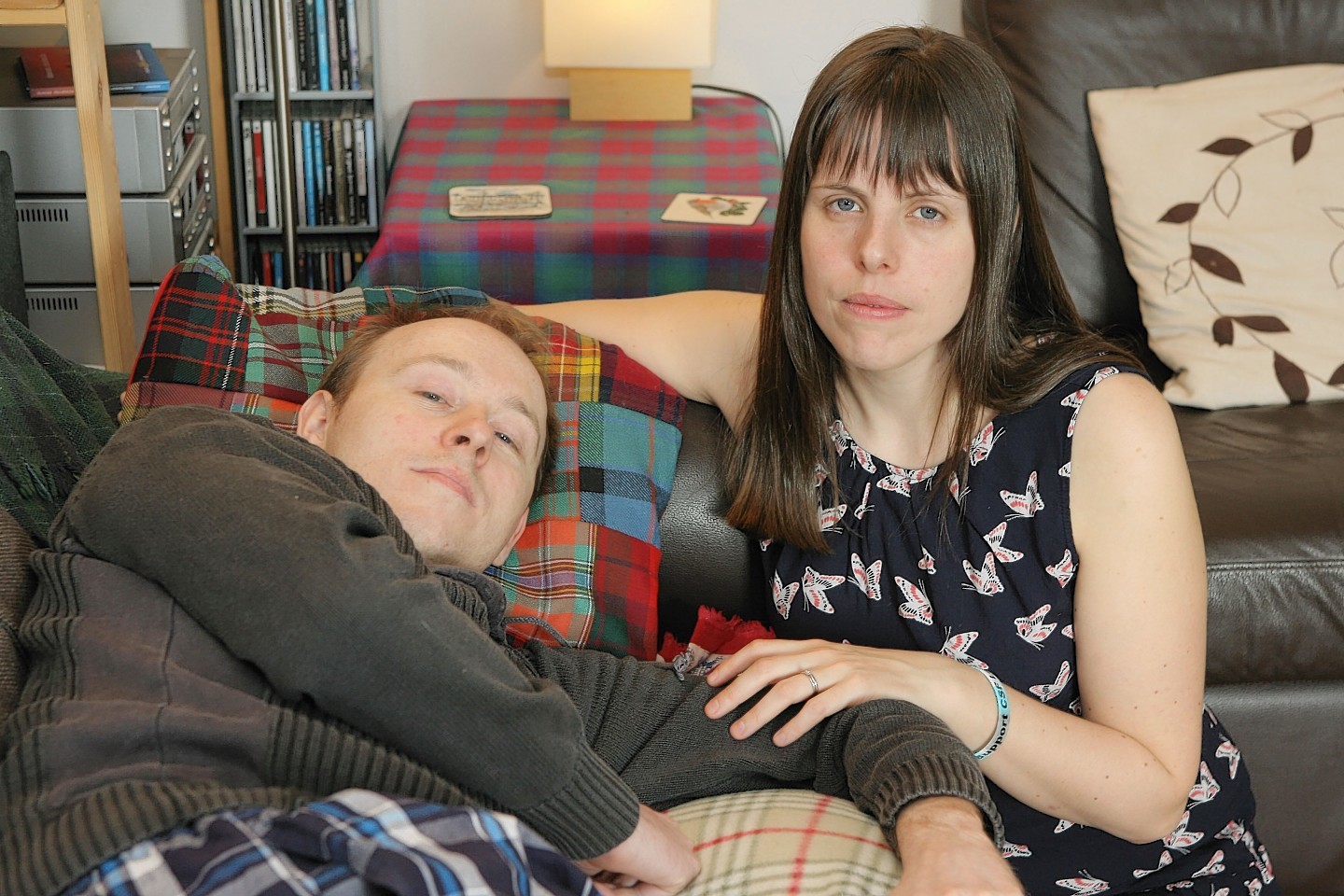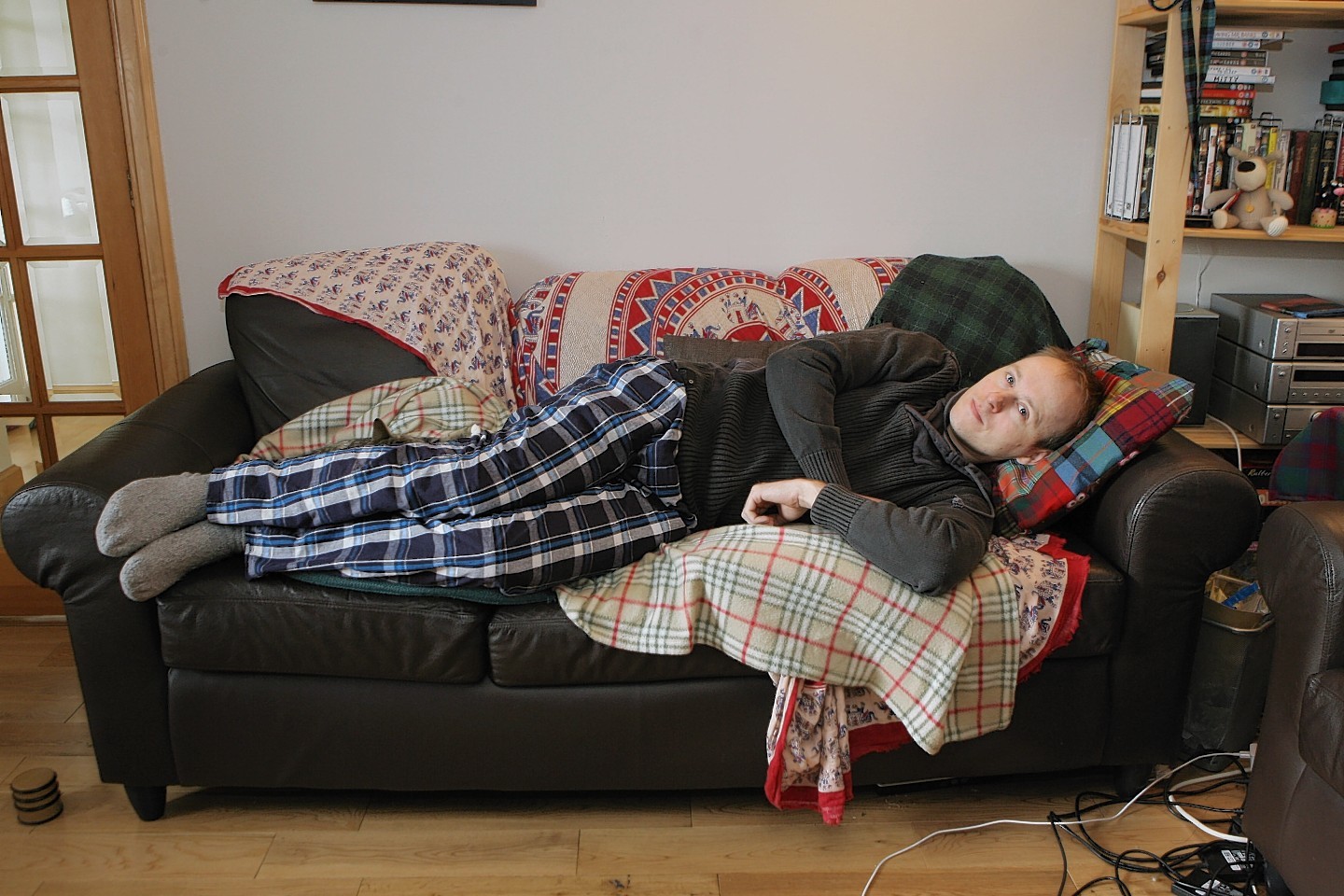Hollywood star George Clooney’s surgeon will perform pioneering treatment on a Scot suffering from the same rare brain condition which drove the actor to contemplate suicide.
Dr Wouter Schievink says surgery offers the best hope of a cure for David Baldwin after the debilitating condition left him unable to put on his own socks.
Forced to spend his days lying on the sofa, Mr Baldwin, 35, cannot sit up for more than a few minutes and has not left his house since February – devastating for someone who once enjoyed hillwalking, mountain biking and kayaking.
A fundraising appeal launched by Mr Baldwin’s wife, Cerian, has raised £62,000 in less than three months.
The couple will fly to Los Angeles next month after a consultation with Dr Schievink, the world expert on cerebrospinal fluid (CSF) leaks.
Mr Baldwin, a town planner, said: “I am apprehensive about what’s to come.
“It’s major surgery, there are no guarantees. But it’s something I have to do. It’s hard to express how debilitating this condition is – the effort and energy and sheer determination to live as normal a life as you can. It’s like I’m fighting for my life.”
The surgery will be carried out almost two years after Mr Baldwin woke up with an excruciating headache, later diagnosed as CSF leak.
Doctors believe it may have been caused by kayaking.
Walking significantly worsens Mr Baldwin’s symptoms, which include crippling headaches, pressure in his head, eyes and ears, tinnitus, muscle spasms and tingling around his body.
Dr Schievink has now studied scans and discussed treatment with the couple in a half-hour phone call.
Mr Baldwin, of Strathpeffer, said: “The surgeon says there is about a 99% chance of finding the source of the leak.
“Assuming they can find it, he reckons a 90-95% chance they can fix it. It’s pioneering stuff.”
He added: “If they can fix the leak and I can only nod my head a little bit, that’s still much better than the situation I’m in at the moment.
“It’s not being able to get out and about that I really struggle with – not being able to enjoy a nice walk on a Sunday afternoon. It would be lovely just to watch a film at the cinema. Put the kettle on. Read the paper. Enjoy a nice long shower.”
Mrs Baldwin, 34, a senior planner with the Scottish Environment Protection Agency who is currently caring for her husband, said: “It was like waiting for a phone call from God, but he was so sweet – very patient and reassuring.”
The condition
Hollywood star George Clooney described how he contemplated suicide when he developed the condition after hitting his head while filming Syriana.
Such a leak – affecting about five in 100,000 people – occurs when the protective membrane covering the spinal cord and brain develops a tear.
Fluid leaks out, leaving the brain no longer properly supported and resulting in debilitating neurological symptoms.
Dr Schievink employs existing technology – used in the UK for detecting brain aneurysms but not CSF Leaks – in a new way to pinpoint tears in the membrane.
His team will put Mr Baldwin under general anaesthetic and inject dye into the spinal sac under high pressure, watching on a monitor to see where the dye comes out.
The scan is so sensitive that Mr Baldwin’s breathing will be stopped for around a minute during the procedure.
Most patients have surgery in the 24 hours following the scan.
Larger tears are stitched. Smaller tears are wrapped in a man-made collagen material, which is absorbed by the body over time.
The dangers of surgery can include permanent impairment of movement, depending on the site of the leak.
Surgery costs £60,000, with an extra £20,000 needed for accommodation and travel.
To donate – leftover funds will go to a charity the couple are setting up, which will offer advice and support to fellow sufferers and seek to raise the profile and understanding of the condition within the medical profession – go to www.davidbaldwin.scot.

